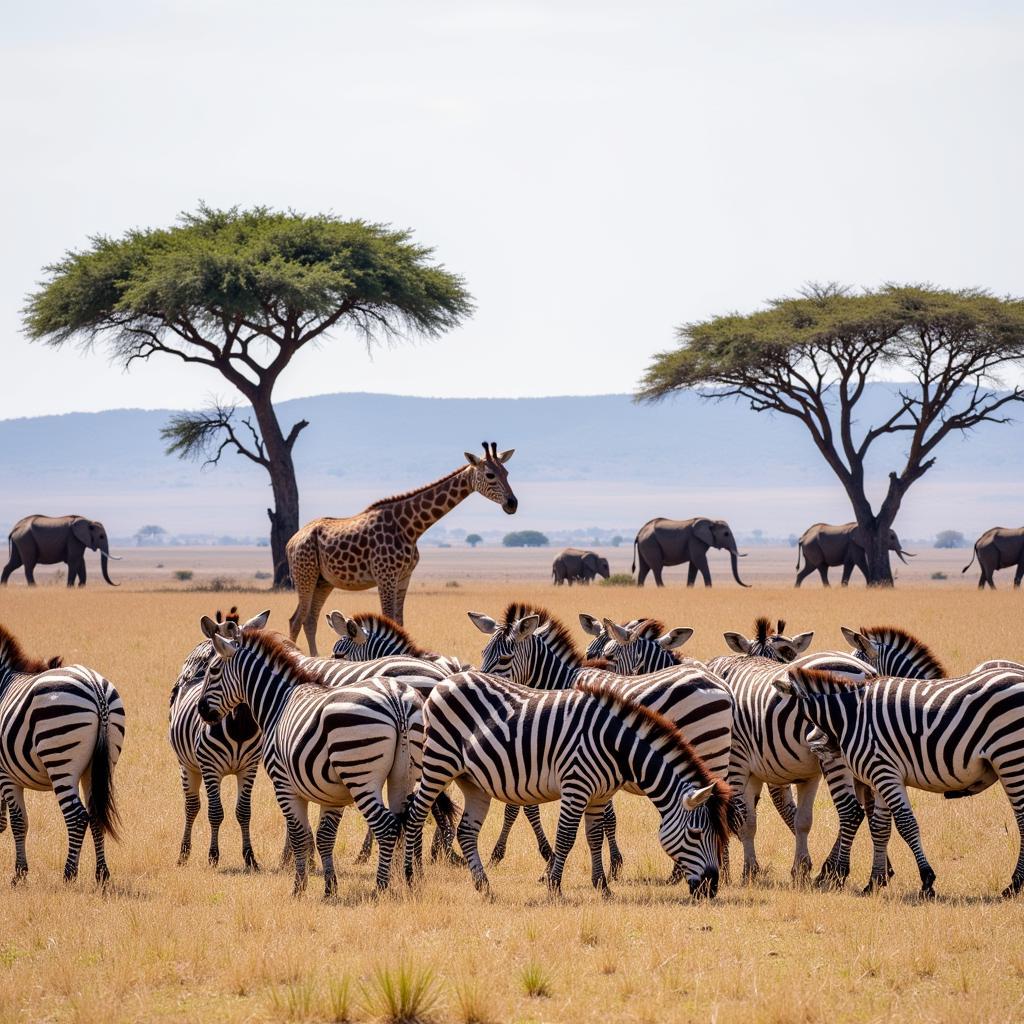Exploring Africa’s Dry Lands: A Journey Through Arid Landscapes
Africa’s dry lands are a vast and diverse tapestry of ecosystems, cultures, and captivating landscapes. From the rolling dunes of the Sahara Desert to the savannas of the Sahel, these arid and semi-arid regions cover a significant portion of the continent, shaping the lives and traditions of its people. This exploration delves into the heart of Africa’s dry lands, unveiling their unique beauty, challenges, and the remarkable resilience of life that thrives within them.
Unveiling the Diversity of African Dry Lands
Often perceived as barren wastelands, Africa’s dry lands are anything but desolate. They encompass a range of ecosystems, each with its unique characteristics and inhabitants. The Sahara, the world’s largest hot desert, evokes images of endless sand dunes, yet it harbors hidden oases teeming with life. The Sahel, a semi-arid belt stretching across the continent, transitions between the Sahara and the savannas, showcasing a mosaic of grasslands, thorny shrubs, and acacia trees. Southern Africa boasts arid and semi-arid regions like the Kalahari Desert and the Karoo, each with its distinct flora and fauna.
These dry lands are home to a remarkable array of plant and animal life that has adapted to survive in these harsh conditions. From the iconic acacia trees, providing shade and sustenance, to the resilient desert foxes and gazelles, the biodiversity of these regions is a testament to nature’s ingenuity.
 African wildlife on the savanna
African wildlife on the savanna
Life on the Edge: Human Adaptation to Arid Environments
For centuries, indigenous communities have thrived in Africa’s dry lands, adapting their lifestyles to the challenges of limited water resources and unpredictable weather patterns. Nomadic pastoralists, like the Maasai in East Africa and the Tuareg in the Sahara, have traversed these lands with their herds, relying on their deep knowledge of the environment to find grazing areas and water sources. Their traditional practices, honed over generations, ensure the sustainable use of these fragile ecosystems.
Agriculture in these regions often relies on ingenious techniques like terracing and water harvesting to maximize the use of scarce resources. Indigenous crops, like millet and sorghum, are drought-resistant and provide essential sustenance. The knowledge and resilience of these communities offer valuable lessons for sustainable living in arid environments.
Challenges and Conservation Efforts in Africa’s Dry Lands
Climate change poses a significant threat to Africa’s dry lands, exacerbating desertification and increasing the frequency and intensity of droughts. This puts immense pressure on ecosystems and the communities that depend on them. Overgrazing, deforestation, and unsustainable agricultural practices further degrade the land, leading to soil erosion and loss of biodiversity.
However, there is hope. Numerous organizations and local communities are working tirelessly to combat desertification and promote sustainable land management practices. Reforestation efforts, such as the Great Green Wall initiative, aim to create a barrier against the encroaching Sahara Desert and restore degraded land. Empowering local communities to manage their natural resources sustainably is crucial for the long-term health of these vital ecosystems.
The Cultural Tapestry of Arid Africa
Beyond the ecological significance, Africa’s dry lands are rich in cultural heritage. Ancient rock art, found in caves and rock shelters, provides glimpses into the lives and beliefs of past civilizations that inhabited these regions. The vibrant traditions of music, dance, and storytelling have been passed down through generations, reflecting the close relationship between people and their environment.
From the intricate beadwork of the Maasai to the camel caravans traversing the Sahara, the cultures of arid Africa are as diverse and captivating as the landscapes themselves. Exploring these traditions offers a unique opportunity to appreciate the resilience, creativity, and deep connection to the land that defines the human spirit in these challenging yet awe-inspiring environments.
Conclusion
Africa’s dry lands, far from being desolate wastelands, are vibrant ecosystems teeming with life and home to rich cultural traditions. Understanding the delicate balance of these regions, the challenges they face, and the remarkable resilience of their inhabitants is crucial for appreciating their significance. By supporting conservation efforts and embracing sustainable practices, we can contribute to the preservation of these extraordinary landscapes for generations to come.
FAQ
What are the major dry land regions in Africa?
Africa’s major dry land regions include the Sahara Desert, the Sahel, the Horn of Africa, the Kalahari Desert, and the Karoo.
How do plants and animals survive in African Dry Lands?
Plants and animals have developed remarkable adaptations to survive in arid environments. For example, some plants have deep roots to access underground water, while some animals are nocturnal to avoid the heat of the day.
What are the main threats to Africa’s dry lands?
Climate change, desertification, overgrazing, deforestation, and unsustainable agricultural practices are some of the major threats to these fragile ecosystems.
What is being done to protect Africa’s dry lands?
Conservation efforts include reforestation projects, sustainable land management practices, and empowering local communities to manage their natural resources.
How can I contribute to the conservation of Africa’s dry lands?
You can support organizations working in these regions, make sustainable choices in your own life, and raise awareness about the importance of protecting these vital ecosystems.
Are there any opportunities for tourism in Africa’s dry lands?
Yes, responsible tourism can contribute to the conservation of these areas and provide economic opportunities for local communities. Some popular destinations include national parks, cultural heritage sites, and eco-lodges.
What are some of the cultural highlights of Africa’s dry lands?
The cultural tapestry is rich and diverse, encompassing ancient rock art, traditional music and dance, unique crafts, and nomadic lifestyles.
Need more information? Check out these articles: African kudu hunt, African jungle animals and plants and African essentials argan oil.
For any assistance, please contact us:
Phone Number: +255768904061
Email: kaka.mag@gmail.com
Address: Mbarali DC Mawindi, Kangaga, Tanzania.
We have a 24/7 customer support team.
